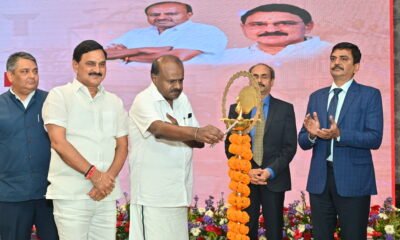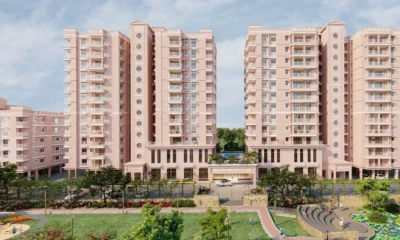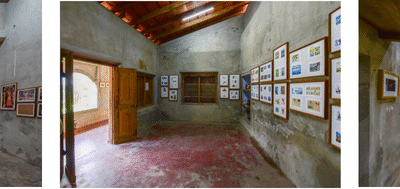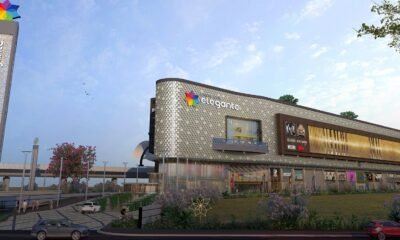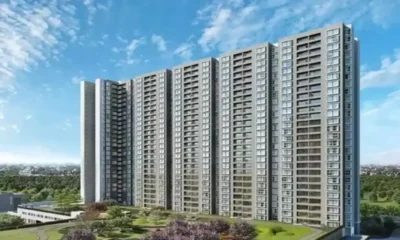Guest Column
India’s Smart City Revolution: A Journey Toward Carbon Neutral, World-Class Living

By Rajani Kant Mishra

New Delhi, November 18, 2025: Prime Minister Narendra Modi’s announcement of the launch of the Smart Cities Mission in 2015 marked the beginning of a new Bharat. Conceived as a leap into the digital urban future, the mission was more than a technological experiment — it was a vision to modernise India’s infrastructure, improve quality of life, and build cities that are both sustainable and globally competitive. Nearly a decade later, the initiative has redefined how Indians live, work, and move in their urban spaces. From wider roads and modern housing projects to renewable energy systems and integrated mobility, the mission is a catalyst not just for India’s carbon-neutral ambition of 2070, but also for building cities that people are proud to call home.
The World’s First Smart City: Setting the Benchmark
Do you know which was the world’s first smart city? Songdo, in South Korea, developed on reclaimed land near Seoul, is often hailed as the pioneer. Built in the late 2000s, Songdo offered a glimpse into the future with underground pneumatic waste systems, green-certified buildings, and an extensive digital infrastructure that allowed residents to live smarter and safer. It showed that cities can combine sustainability with convenience and innovation.
Inspired by such models, India designed its own approach, one that was rooted in its unique challenges — rapid population growth, infrastructural backlog, and diverse socio-economic realities. Thus, the Smart Cities Mission was launched, not to replicate global examples but to create India’s own blueprint of urban transformation.
The Smart Cities Mission
Led by the Ministry of Housing and Urban Affairs (MoHUA), the mission aimed to upgrade 100 cities by modernising infrastructure, improving service delivery, and adopting smart solutions. With investments of over INR 2 lakh crore, the program has focused on retrofitting old areas, redeveloping neglected pockets, and developing new greenfield zones.
This has directly impacted the real estate and infrastructure sectors. Roads have been widened and modernised, flyovers and bridges have improved connectivity, and digital services like e-governance platforms have made approvals and transactions smoother for both developers and citizens. Special Purpose Vehicles (SPVs) created for each city have ensured professional management, paving the way for transparent and timely project execution — a welcome step for investors, developers, and residents alike.
Transformation on the Ground
The results on the ground are visible. Indore, now India’s cleanest city, has transformed its waste management system with door-to-door collection and energy recovery plants — a major draw for families looking to relocate to healthier urban environments. Surat’s smart lighting and traffic systems have improved safety and cut energy costs. Pune and Bhopal’s integrated command and control centres have made water supply, electricity distribution, and urban mobility far more efficient, attracting both businesses and residential buyers.
Ahmedabad and Lucknow have piloted fleets of electric buses, setting the tone for greener mobility. Jaipur has deployed smart traffic systems that reduce commuting time, while cities like Bhubaneswar and Vishakhapatnam have invested in modern housing clusters integrated with public spaces, cycling tracks, and reliable utilities. According to MoHUA, out of 7,978 sanctioned projects worth INR 1.7 lakh crore, over 6,000 have been completed — proof that the Smart Cities Mission has already reshaped India’s urban infrastructure and made cities more liveable.
What Needs to Be Done
That said, the journey is far from over. Financing gaps, capacity constraints, and uneven execution continue to affect some projects. For Indian cities to truly match global benchmarks, three priorities stand out.
First, infrastructure must go hand in hand with sustainability — scaling up electric mobility, enforcing green building codes, and adopting renewable energy at a mass scale. For example, while solar rooftops have been installed in several smart cities, integrating them across housing colonies and commercial hubs could drastically reduce energy bills and carbon footprints.
Second, municipal governance needs reform. Many urban local bodies lack the technical expertise to manage advanced systems once projects are completed. This is where leadership matters. Unlike in many developed nations where city mayors act as the immediate guardians of their cities with decisive powers, Indian mayors are often limited to ceremonial roles. Empowering mayors with greater financial and administrative authority would allow them to act swiftly on pressing issues — whether it is traffic congestion, flooding, or waste management — without waiting for state or central approvals. More power at the city level means faster implementation, better accountability, and decisions aligned with citizens’ everyday needs.
Third, citizen participation must deepen. Infrastructure alone cannot transform a city unless residents adopt behavioural change — segregating waste, conserving water, and choosing public transport.
Going forward, aligning smart cities with India’s broader sustainability agenda — from the National Electric Mobility Mission to renewable energy development goals — will be crucial. Only then can Indian cities move from being pockets of progress to globally competitive, liveable, and sustainable urban centres.
A Livable, Carbon-Neutral Bharat
The Smart Cities Mission is more than an urban development scheme — it is a roadmap for an India that balances growth with sustainability. It represents the country’s determination to build cities that are technologically advanced yet environmentally responsible, globally connected yet deeply rooted in local needs.
As the mission moves toward completion, its success will be measured not only by kilometres of roads built or projects completed, but by how seamlessly it integrates technology, governance, and citizen participation to create cities that truly enhance life.
If sustained with the same vision and resolve, India’s smart cities will become the foundation of a carbon-neutral, resilient, and inclusive Bharat — one where modern infrastructure and quality of life are not privileges, but promises fulfilled.
The author is Founder & Chairman of the Amrawati Group

 News3 days ago
News3 days agoIshara Art Foundation to Present Group Exhibition ‘Amphibian Aesthetics’ at Ishara House in Kochi

 News4 weeks ago
News4 weeks agoUnity Group Launches Unity One Elegante Mall at Netaji Subhash Place, Delhi

 News1 week ago
News1 week agoMumbai Returns to Pre-Pandemic Investment Levels, Surpasses $1 Billion 4th Consecutive Year: Cushman & Wakefield

 News4 days ago
News4 days agoK2 Infragen Delivers Robust H1 with 76.5% Revenue Growth, 70% Profit Jump

 News1 week ago
News1 week agoGurugram Premium Segment Drives Projected Rs 6.65 Lakh Crore Market: ANAROCK

 News1 week ago
News1 week agoGurugram’s Growth Corridors: Micro-Markets Powering the City’s Real Estate Future

 News1 week ago
News1 week agoAdani Cement and Coolbrook to Deploy World’s First Commercial Rotodynamic Heater for Cement Decarbonisation

 News1 week ago
News1 week agoTIL Ltd Reports Q2 FY26 Results with Enhanced Order Book Position, Strong Execution Momentum





